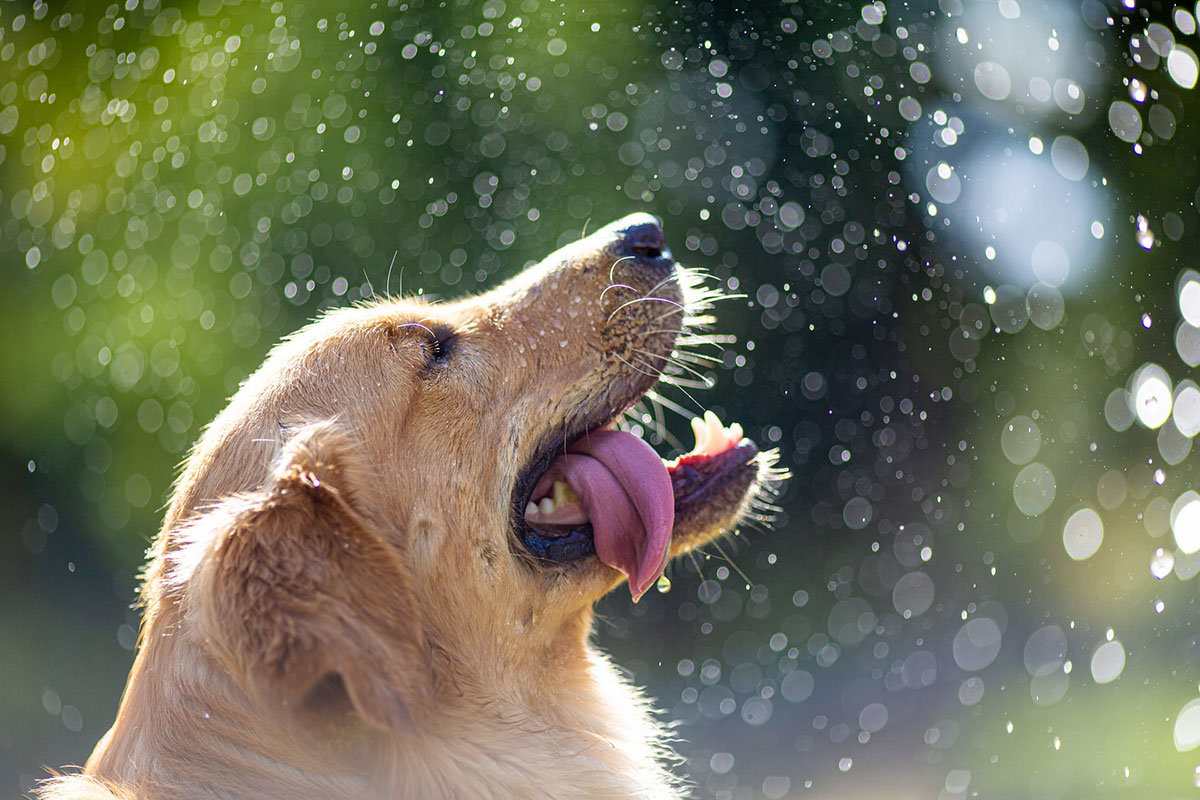Are you tired of a dog that won’t stop barking for attention? Demand barking is a common problem many dog owners face. It can be hard to solve.
Understanding why your dog barks is key to solving the problem. By finding out why, you can create a plan. This plan will help stop the barking and improve your bond with your dog.
This article will give you practical dog training tips to stop demand barking. With the right methods, your dog can learn to ask for what they need without barking too much.
Understanding Demand Barking in Dogs
It’s important to know why dogs bark to get what they want. This barking is called demand barking. It happens when a dog keeps barking for food, attention, or to go outside.
Demand barking is a learned behavior. It’s often because the owner gives in to the barking. For example, if a dog barks for food and gets it, they learn that barking works.

To stop demand barking, you need to find out why it happens. The table below shows common reasons and how to fix them.
| Reason for Demand Barking | Potential Solution |
|---|---|
| Seeking Attention | Ignore the barking and reward silence |
| Wanting Food | Establish a consistent feeding schedule |
| Needing to Go Outside | Take the dog out at consistent intervals |
For more tips on stopping barking and improving your dog’s behavior, check our services page. Understanding and fixing the reasons for demand barking can help your dog behave better. It also strengthens your bond with them.
The Psychology Behind Demand Barking
Dogs bark to communicate their needs or wants. Certified professional dog trainer Courtney Bayer says dogs use barking as a main way to express themselves.
Demand barking comes from learned behavior. Dogs think barking gets them what they want, like food, attention, or play. Knowing this is key to solving the problem.

Dogs bark for many reasons, like anxiety, boredom, or needing to interact. Finding out why they bark is the first step to training them.
Understanding demand barking helps owners reduce their dog’s barking. It’s about knowing what triggers their barking and meeting their needs. This breaks the cycle of demand barking.
Assessing Your Dog’s Specific Barking Patterns
To stop demand barking, first figure out why your dog barks. Assessing your dog’s barking patterns means watching when and why they bark. Look at the time, what’s happening around them, and how they act.
Keep a journal to track when your dog barks. Write down what makes them bark and the situation. Things like noises, people, other animals, or wanting attention are common reasons. This helps you know if they bark to alert, because they’re anxious, bored, or want attention.

After finding out what triggers their barking, you can make a plan. You might teach them to ignore certain sounds or show them better ways to get attention.
Knowing why your dog barks is key to gooddog training. It lets you train them in a way that fits their needs. This can help cut down on demand barking.
Essential Preparation Before Training Begins
Getting ready for dog training is key, and it’s even more important for stopping demand barking. Dog owners need to be all in and know what’s needed.
First, set clear goals for what you want to achieve. Decide what you want to accomplish and when. Knowing what training entails is also vital. It helps you understand the work needed to get results.
Key Preparation Steps:
- Identify the causes of demand barking
- Set clear, achievable goals
- Understand the training process and its requirements
| Preparation Step | Description |
|---|---|
| Identify Causes | Understand why your dog is barking demandingly |
| Set Clear Goals | Establish what you want to achieve through training |
| Understand Training | Learn about the training process and its requirements |

By committing to the training and following these steps, owners can cut down on demand barking. This leads to a better relationship with their dogs.
Training Techniques That Eliminate Demand Barking Forever
Training methods that ignore barking and reward silence work well. Demand barking can be tough, but the right approach can make a big difference.
How to Properly Ignore Without Reinforcing
Ignoring the barking is a key step in stopping it. It’s important to remember that any attention, even negative, can make the barking worse. Consistency is key; everyone in the family must ignore the barking to avoid confusing the dog.
When the dog starts barking, stay calm and don’t react. Don’t look at the dog, talk to it, or touch it until it stops barking. This can be hard, but it’s necessary.
An extinction burst is when the dog barks more when it realizes it’s not getting a reaction. This is a crucial part of training. Remaining consistent during this time is very important.
To handle extinction bursts, don’t give in to the barking. If it gets too loud, use white noise or take the dog away from the cause of the barking.
Step-by-Step Training Process
The training process has several steps:
- Find out what makes the dog bark.
- Use a consistent ignoring method.
- Give treats and praise when it’s quiet.
- Slowly stop giving treats as the dog gets better.
Reinforcement Schedules
Reinforcement schedules are important in training. Start by rewarding the dog every time it’s quiet. Then, switch to a variable schedule to keep the behavior going.
| Training Stage | Reinforcement Schedule | Expected Outcome |
|---|---|---|
| Initial Training | Continuous Reinforcement | Rapid Learning |
| Intermediate Training | Variable Ratio Schedule | Consistent Behavior |
| Advanced Training | Intermittent Reinforcement | Long-term Retention |
By using these training methods and staying consistent, you can stop demand barking for good. Remember, patience and persistence are essential for successful dog training.
Tools and Products That Support Bark Training
Dog owners can use many tools and products to help with bark training. These tools make training easier and more effective.
Interactive Toys are great for keeping dogs busy and reducing barking. They include puzzle toys and treat-dispensing toys that challenge dogs.
Training Collars are also key. They can emit a citronella spray or a high-pitched sound to stop barking. This can help control barking behavior.
Bark Training Apps are another helpful tool. They detect sounds and alert owners to barking. Some apps also offer training tips and advice.
Using these tools and products can make bark training more effective. Dog owners can create a better training program.
Breed-Specific Considerations in Bark Training
Understanding your dog’s breed is key when training them to stop barking. Different breeds have their own traits and histories. These can affect how they react to training.
Breed-specific considerations are vital. Some breeds bark more because of their original job. Guard dogs and watchdogs bark at strangers or noises because they’re meant to alert.
For example, Beagles and Foxhounds bark a lot because they were bred for hunting. They need lots of exercise and play to stop barking. Basenjis, though, are quieter but still need training and socializing.
To train your dog well, you must know their breed’s needs. You might need to change how you train, how much you exercise them, and even how you speak to them.
By focusing on breed-specific traits, you can make a bark training plan that works for your dog. This will help reduce their barking.
Advanced Training Methods for Persistent Barkers
Persistent barking in dogs often needs more than basic training. For some dogs, the problem is so deep that advanced training methods are needed to fix it.
Understanding why a dog barks is key in advanced training. By finding out why, owners can make their training fit the dog’s needs. This might include teaching the dog to not react to certain things.
If a dog keeps barking after trying basic training, it’s time for professional help. A certified trainer or behaviorist can give personalized advice. They help owners create a training plan that works.
Professional trainers also share insights on the dog’s behavior. They suggest training methods that might work better.
What to Expect from Training Sessions
In training sessions, owners learn new ways to handle their dog’s barking. Trainers work with the dog and owner, showing how to use the training plan.
It’s important for owners to be patient and consistent with new training. With time and effort, even the most persistent barkers can learn to be quieter.
By using advanced training and getting professional help, owners can solve their dog’s barking problems. This makes for a more peaceful home for everyone.
Managing Environmental Factors That Contribute to Barking
To train a dog well, you must handle the environmental factors that cause barking. Things like noise, distractions, and changes in the surroundings can make dogs bark.
Noise is a big factor in barking. Dogs hear very well, and loud sounds can scare or upset them. Identifying the sources of noise and reducing them can help stop barking.
Distractions like people, other animals, and objects also cause barking. Dogs might bark from excitement, anxiety, or to warn their owners. Managing distractions by limiting exposure and creating a calm space can help.
Understanding and managing environmental factors helps create a better training environment. It reduces barking caused by demand. Good dog training tackles the reasons behind barking.
Common Mistakes to Avoid in Demand Bark Training
Effective demand bark training needs you to know and steer clear of common mistakes. Many dog owners face challenges with their dog’s barking. This is often because of inconsistent training methods or unintentionally reinforcing the barking behavior.
One big mistake is paying attention to your dog when it’s barking. This can seem like a reward, making the barking worse. Wait for a moment of silence before giving attention or treats. Inconsistency in training is another big error. It’s key that all family members use the same commands and rewards for successful training.
Not giving your dog enough exercise and mental stimulation can also lead to barking. Dogs that are bored or have too much energy tend to bark more. Adding regular exercise and fun activities to their day can help reduce this problem.
To avoid these common mistakes, dog owners should:
- Be consistent in their training methods and commands.
- Avoid rewarding the dog while it is barking.
- Ensure the dog is getting enough physical and mental stimulation.
By knowing these potential pitfalls and taking steps to avoid them, dog owners can make their demand bark training more effective. This leads to a more peaceful home environment.
Conclusion: Maintaining Long-Term Success
To stop demand barking in dogs, you need a big plan. It’s not just about the first training session. Keeping up with training and positive feedback is key.
Understanding why dogs bark and knowing their barking patterns helps. You can then create a training plan that really works.
Being consistent and patient is crucial. Regular practice and rewards help your dog remember good habits. This makes demand barking less likely.
Training a dog is a big job that takes time. Stick to your plan and make changes when needed. This way, you and your dog can live together happily, without demand barking.






